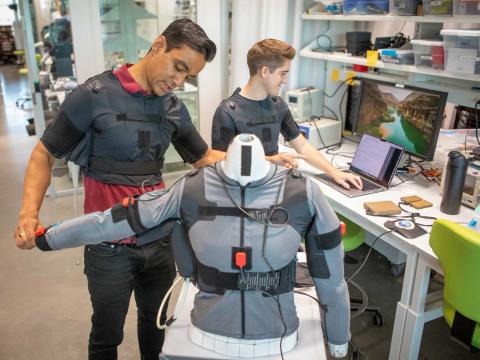Disruptive by Design: Managing Machines That Learn
As businesses, governments and militaries wrestle with artificial intelligence (AI) technologies, managing machines that learn is a challenge common to all.
As businesses, governments and militaries wrestle with artificial intelligence (AI) technologies, managing machines that learn is a challenge common to all.
AI will not merely displace blue-collar tasks; it will affect every management level. Managers will outsource many mundane, time-consuming, attention-taxing and less rewarding tasks. The bigger challenge, however, is integrating AI systems into their teams and determining how teams will collaborate with AI systems to increase insights, improve decision making and enhance leadership.
New models of human-machine teaming will emerge as organizations, including the U.S. Department of Defense, adopt AI within their ranks. Many oversell the promise of AI, but few understand the full potential of integrating AI beyond its ability to remove humans from dull, dangerous and dirty jobs.
Therefore, leaders should begin with the following objectives in mind.
Early Wins Lead to Better Buy-in
The overhyped potential of AI has convinced leaders that they must adopt it to maintain or gain a competitive advantage, but the rank and file must be convinced too. Rather than chasing every overhyped claim of AI bliss, leaders must thoroughly understand where the technology immediately offers the most value.
Routine tasks such as scheduling, allocating resources and computer-aided reporting are areas already showing great promise. AI systems coordinating across disparate sets of data to find optimal solutions save time and reduce errors. For example, Milind Tambe and his research group at the University of Southern California have applied machine learning to determine optimal ways to design guard patrols. By prioritizing assets to be defended and considering limited resources, such as guards, this group reduced risk in a variety of settings—from security at Los Angeles International Airport to poaching in African savannas. Many organizations can imagine similar ways to outsource relatively simple decisions to AI systems.
AI is already transforming so-called knowledge work, in which knowledge is the primary capital. For example, a handful of news organizations have outsourced the writing of articles to AI systems capable of digesting raw data, such as baseball statistics, to piece together coherent stories. Likewise, it will not be long before AI programs generate quarterly shareholder reports. Predictive analytics and access to voluminous data will make it relatively easy for AI systems to produce insightful recommendations in seconds, rather than the days or weeks human workers now take.
Within the Defense Department, AI systems, aided by robust new translation engines capable of parsing both public and private reporting, may soon replace thousands of intelligence analysts. These systems are not far from providing decision makers new insights with more comprehensive analysis than humans can offer.
Maximize Human Strengths—Then Pair Them With AI
Leaders considering how best to apply AI should also reconsider what humans do best. Most AI analysts believe experience and expertise still provide humans an advantage with decisions involving incomplete information. Interpreting incomplete data and providing meaningful insight will continue to be highly valued and uniquely human ... for now.
AI also does not possess our ability to make sense of data and answer “why” questions. Much of the success of deep-learning neural networks, where constant re-weighting of internal nodes can improve an algorithm’s predictive ability, remains indiscernible. We will never know why the AI system came to a given conclusion—we just know it works. This is not much different from our understanding of our own minds.
Humans are particularly good at generating new ideas as well. Imagination, innovation and strategy development involve a highly complex interaction of variations in human intellect with an infinite set of motivating factors. Humans offer a rich set of idiosyncratic backgrounds and experiences that fuel new ideas. Their hopes and dreams inspire new applications of thought. Human ideas may contain prejudices and errors, but these errors may be mitigated with the help of AI systems.
Make the Right Human-Machine Match
The real power of AI will be in pairing these systems with the right team of human innovators capable of leveraging machine-generated analysis with creative applications. Many leaders believe judgment to be an individual effort, despite the many benefits of multiple perspectives for solving problems. True advantages in decision making will come from teaming the best of human creativity and problem solving with powerful machine learning analysis. This teaming of the analytical machine with the intuitive human mind offers a new symbiotic decision-making partnership.
Maj. Ryan Kenny, USA, created an online forum to foster discussions on emerging technologies at www.militarycommunicators.org. The views expressed here are his alone and do not represent the views and opinions of the U.S. Defense Department, U.S. Army or other organizations with which he has been affiliated.




Comments